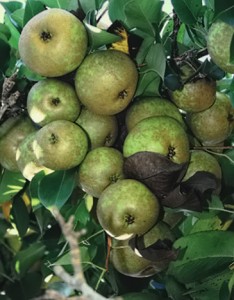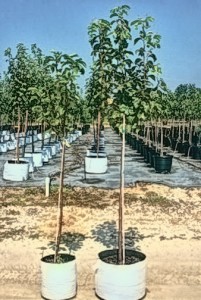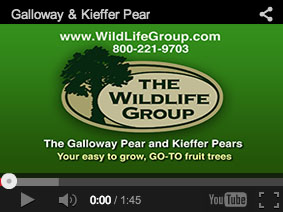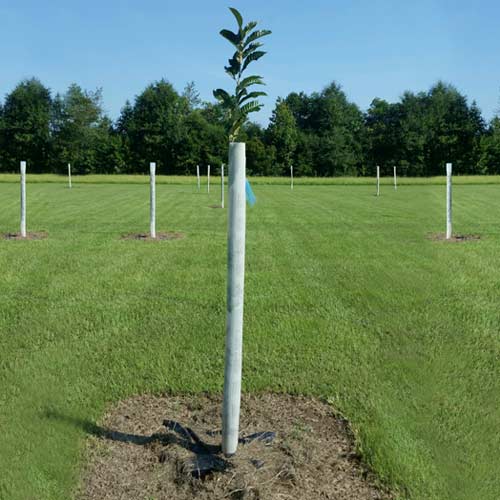 Pears are the ideal tree to attract deer to food plots and wildlife habitat improvement. They are the easiest fruit tree to grow for improved deer population growth and management. How many old home sites have you visited or found on your property that have pears growing and is a hotspot for wildlife? Most everyone you know can tell you where an old pear tree is that has been there as long as they can remember. Why is this?
Pears are the ideal tree to attract deer to food plots and wildlife habitat improvement. They are the easiest fruit tree to grow for improved deer population growth and management. How many old home sites have you visited or found on your property that have pears growing and is a hotspot for wildlife? Most everyone you know can tell you where an old pear tree is that has been there as long as they can remember. Why is this?
• Pears are very drought tolerant
• Pears are very hardy & disease resistant
• Pears are the easiest fruit tree to grow
• Pears are a very consistent producer
• Pears will grow in varying soil conditions
Okay! Which pear should I plant? Even though pears are self-pollinating, it is always better to plant more than one variety. It is my belief that planting more than one variety makes your trees more prolific producers with larger, juicier fruit and gives you an extended drop period.
If our whole objective is to increase the food source and productivity of our land, we need to supply food and cover all year, not just during hunting season.
So let’s just say we plant ten varieties of pears spaced 25 ft. x 25 ft. You are looking at planting 1⁄4 acre and having production from August until December. Planting many different varieties also insures that you will have pears. Fruit, along with all trees can and will be unpredictable at times. So mixing the varieties will almost always insure that you will have some pears each season.
Now how do we choose what varieties and the size of plants that we need to purchase?
Several considerations should go into your plant selections.
• Size of plants to purchase
• Water needs the first summer
• Different varieties needed for pollination & overlapped drop period
• Correct spacing
• Correct care & pruning tips
• Protection needed to help with survival

All of these questions should be answered by your Wildlife Tree Nursery. But for starters, the trees can be purchased bareroot or in container.
- Bareroot will require the smallest amount of effort. The bareroot trees will be a one year grafted plant removed from the ground in December and shipped to your door via UPS. The roots will be dipped in moisture management polymer to retain moisture during shipment. Simply keep the roots moist and out of direct sunlight and wind until the planting date, which should be as soon as possible.
- Container plants would be the next choice. These plants will obviously be larger and closer to production. When purchasing containers, you are buying years. A 7 gallon container plant is a two year old plant; a 15 gallon is a three year old plant and typically will be of producing age. But keep in mind that it is very important after planting to give these plants a year of new growth before allowing them to fruit.What this means is that during the first growing season, it is important to remove the fruit so that the tree can put all of its needed energy into growth and survival. Also keep in mind that these plants will require more care and water the first year than the bareroot plants.
Protection

Regardless of which you decide to go with, please make plans to protect the trees from the deer, rabbits & mice. Even though you are planting them for the wildlife, they will destroy them.
Purchasing Plantra Jump Start tubes for the bareroot or Tree Bark Protectors for the larger trees is very important to keep bucks from rubbing the trunks or eating the new growth. You can also build 5ft. x 4ft circular fences to put around each tree. However you decide you must protect them.
Spacing, Planting & Care
Space all fruit trees at least 20 -25 ft apart. Plant during late fall or winter months; do not wait until March to decide to plant. You will have poor
results (this applies to all trees). If planting in extremely poor soil, (clay clumpy soil), amend the soil in the planting hole and dig a larger hole to give the plant a more desirable area to get established. Typically after a pear gets established it will flourish. Be sure to add moisture management products to the soil at planting and a small amount of slow-release fertilizer. NEVER add a regular fertilizer (13-13-13) to the hole while planting. This will kill the tree. If you don’t have a quality slow release fertilizer do not fertilize at the time of planting.
Wait until spring blooms then adds about one cup of fertilizer around the drip line of the tree. The trees that you purchase should come pruned from the nursery so no additional pruning will be required the first season. (Look for a follow-up article on proper pruning in Jan- Feb issue of Wildlife Trends Journal.)
Let’s all keep in mind that nothing happens overnight. But if you don’t plant this season you will be another year behind. By planting on normal years and following the correct procedures for care and planting, you should expect an 80% survival rate at the minimum. Most pears should be producing within 3 -5 years of the planting date depending upon what size you purchased. Good Hunting!



